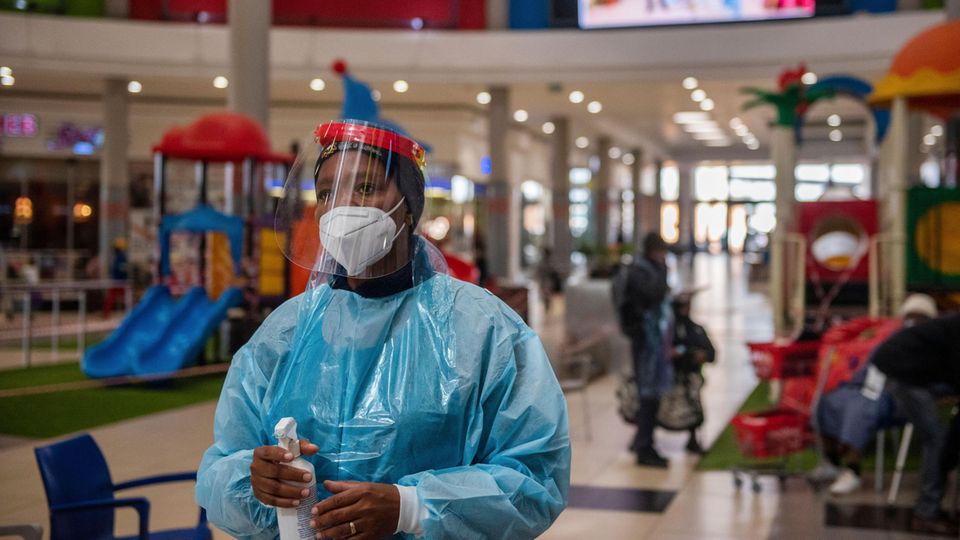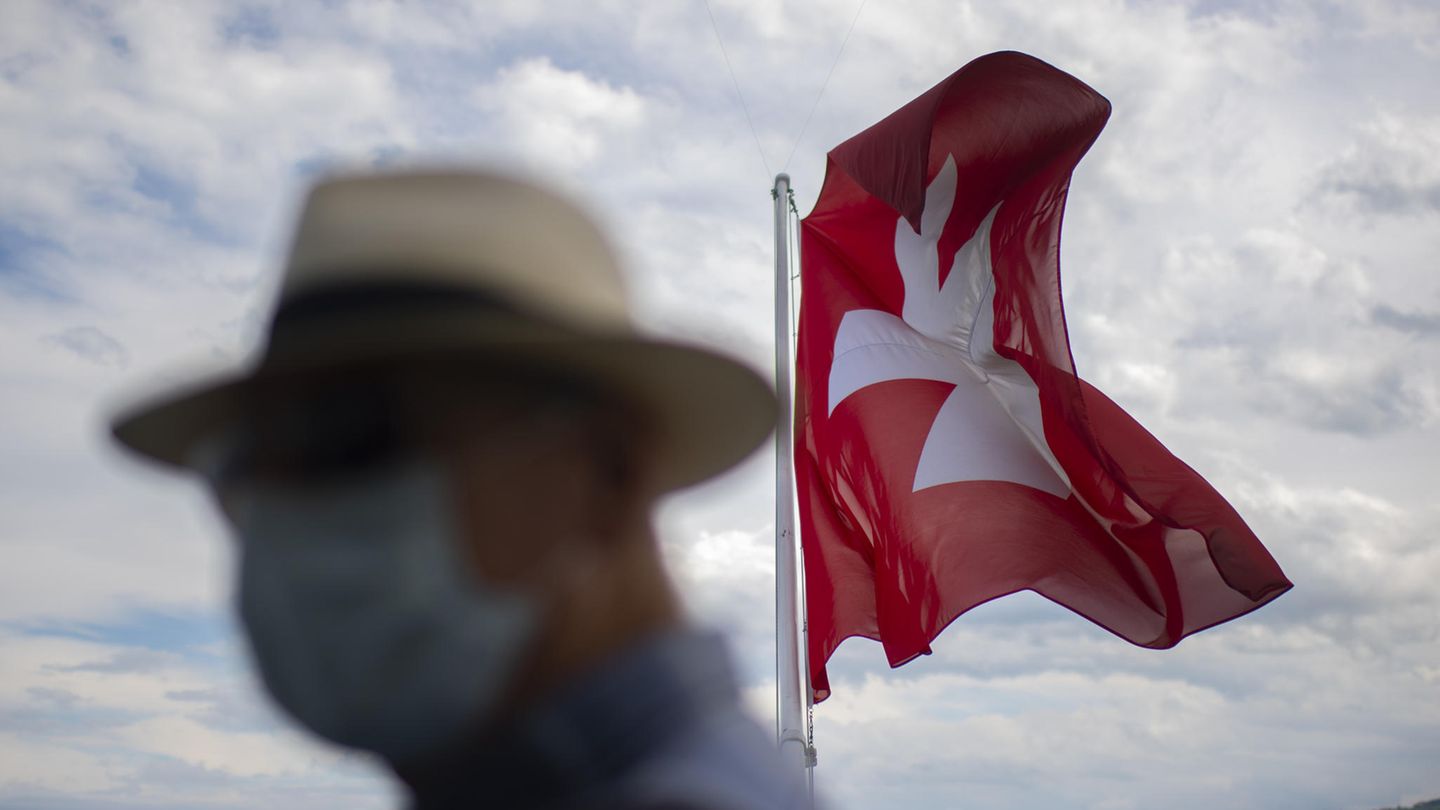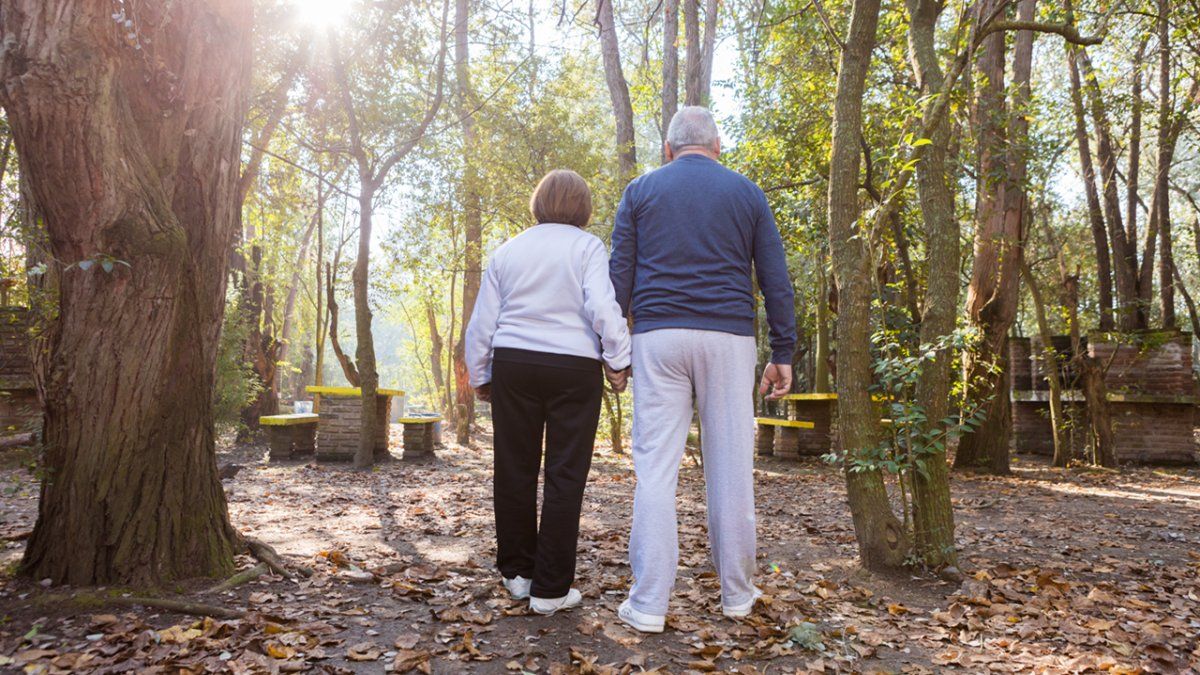Switzerland waived strict corona measures, but accepted higher numbers of infections. The economy thanked you, it is buzzing. But things are not going as smoothly elsewhere. Many confederates are lazy about vaccinations. In the next corona wave, this could be doomed for the country.
Switzerland is doing great. At least economically. The business news agency “Bloomberg” lists the Alpine country in second place in a list of the most successful countries in dealing with the pandemic. So only Norway does better. The supposed recipe for success: mild corona measures. There was no curfew, hotels and ski areas remained open, the schools were only closed for a short time and there is no compulsory test for shopping or dining out. The economy thanked. But the relatively lax handling of the virus did not come without a price. For more freedom, the Swiss accepted higher numbers of infections, more corona patients in intensive care units and more deaths.
During the first and second wave, more than twice as many people infected with corona had to be treated in the hospital there than in Germany (by the way, Bloomberg listed in twelfth place). According to the scientific task force, an “informal triage” occurred, so it was weighed up which patient was given an intensive care bed and which was not. “About twelve percent of all patients were likely to have been affected by such a situation at the height of the second wave,” wrote the task force. “Switzerland did not master the second wave at the end of last, at the beginning of this year,” said Jan-Egbert Sturm, Professor of Applied Economic Research at the elite ETH in Zurich, the German Press Agency. Switzerland reacted too late and closed the shops just before Christmas. Of course, if you had closed earlier you would have lost sales, but that would have saved lives.
Courage for the gap
The strategic orientation of the supposed Corona model student also proves the courage to leave gaps elsewhere. The vaccination rate is meager compared to other European countries. Currently, around 55 percent of the population has been vaccinated at least once. This means that Switzerland is not only below the EU-wide average of 60 percent, but also delivers the worst value in all of southern, western and northern Europe, as the “Tagesanzeiger” has worked out. For comparison: According to “Our World in Data”, Malta currently reports a rate of 91 percent, followed by Iceland with 79.3 and Denmark with 73.3 percent. In Germany, 62.1 percent have now been vaccinated at least once. Only in the eastern parts of Europe is progress even slower.
And: The vaccination motivation of the Swiss is declining more and more, as a look at the numbers shows. In mid-June, 92,000 vaccine doses were inoculated in one day, which was a record. Then the crash. At the moment, just over 20,000 syringes are used every day. At the same time, however, the incidence is already high, more than three times as high as in Germany. This is also reflected in the hospital numbers with three times as many corona patients.
But while other countries are desperately looking for solutions to convince the population of the vaccinations and are beating the drum, the Swiss government is holding back politely. Personal responsibility is the motto. You don’t want to build up pressure – not even with regard to the delta variant of the virus that is currently spreading in Europe. “The vaccination offer stands for itself. Everyone does something for the sake of his or her own health with the vaccination. You don’t actually have to hand in a chocolate to go with it,” the “Tagesanzeiger” quotes Lukas Engelberger, President of the Conference of Health Directors. But is that enough?
Fourth wave could be violent
The federal scientific task force does not believe that. With regard to the current pandemic situation, the scientists are concerned that the low vaccination rate will become a problem in the coming weeks and months and lead to an overload of the health system. They fear that in the next wave, the number of infected people could climb to a new pandemic high. And in a current briefing, they bring incentives such as a lottery into play to make the corona vaccination more attractive.
In order to avert a fourth wave in autumn in Switzerland, a vaccination rate of 80 percent must be aimed for, said Urs Karrer, vice-president of the scientific Corona task force at the end of June for “NZZ am Sonntag”. He reckons that in the absence of containment measures, “more than 60 percent of the unvaccinated people would be infected with the coronavirus”. At this point in time, he said, it needed another “jolt” in the population.

Hotspot Florida with a comparable vaccination rate
In other places it can already be observed what can happen if the virus hits a high percentage of people who have not been vaccinated. With a vaccination rate of 55 percent, Switzerland is three percentage points below that of Florida. The state is currently developing into the corona hotspot in the USA. On Tuesday, the U.S. Department of Health reported nine more infections than ever before and more than 11,500 people who were so seriously ill with the virus that they needed hospital treatment. Even in countries with a higher vaccination rate, the number of infections is rising again, but not nearly as rapidly. “This remains a pandemic of the unvaccinated, overwhelmingly the most prevalent among the people who are not vaccinated. Where there are more vaccinated, there are also fewer cases,” said Rochelle Walensky, the head of the highest US disease authority CDC.
The USA has therefore recently increased the pressure on the unvaccinated population. Federal government employees now have to disclose their vaccination status. Unvaccinated people have to get tested, wear masks and keep their distance. Universities and hospital societies, Walmart, Google and others made vaccination compulsory.
Those:,,, Dpa




